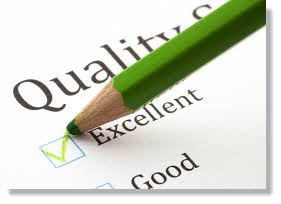— August 8, 2017

qimono / Pixabay
A friend who coaches a girls soccer team recently shared, that after a tough loss, one of her 13-year-old players said, “Well, you know coach, you either win or you learn.” Yeah! We really are coming to appreciate the value of failure and experiments that don’t go exactly as expected.
But it’s not just mistakes that have value; there’s tremendous instructive power in successes as well. In fact, what distinguishes today’s most effective leaders is that they learn from everything and everyone they encounter. They demonstrate learning agility.
Why learn agility now?
No one will argue that today’s business climate is more dynamic and changeable than ever before. Many have written about the VUCA (volatile, uncertain, complex, and ambiguous) world within which we must operate. As a result, businesses must become increasingly agile. This demands flexible, highly responsive strategies as well as leaders who are:
- Expansive, possibility-oriented thinkers, able to recognize patterns, connect dots, and see changing conditions before others do;
- Collaborative, inclusive, and curious;
- Able to act quickly, set new direction, make smart but fast decisions, and engage in focused experimentation; and
- Equally comfortable improvising as necessary and also translating those improvised moves that worked into codified strategies, systems, processes and tools that help the organization continue to evolve.
Given this expanded job description, it’s no longer viable for leaders to rely exclusively upon today’s knowledge, skills, approaches, and strategies. In the words of author Marshall Goldsmith, “What got you here won’t get you there.” The ability to learn, develop and grow is today’s only sustainable competitive advantage. Hence the importance of learning agility.
Learning agility defined
While definitions abound, two in particular paint a vivid picture of what learning agility is and why it’s important.
According to Bersin & Associates, learning agility is a:
“Competency or capability which describes a person’s speed to learn. In most businesses, this skill is considered one of the most important factors in great leadership.”
Korn/Ferry International builds upon this description, defining learning ability as the:
“Ability and willingness to learn from experience, and then apply that learning to perform successfully under new situations.”
And since both definitions include a focus on competencies, capabilities, and ability, the good news for anyone interested in improving performance and organizational impact is that learning agility can be learned!
Any dog can learn new tricks
Enhancing learning agility need not be a complicated undertaking. It requires no organizational mandate, initiative, or training. It comes down to a few key practices that leaders at any level can experiment with and implement informally on their own. Want to be a more agile learner? Try the following:
- Anticipate learning potential in every opportunity. Nearly every encounter, job or assignment contains the possibility for learning if approached with intentionality. Taking even a moment to pause and consider what you might learn from a situation reinforces your intention and enhances your receptivity to new insights that might present themselves.
- Invite and appreciate feedback. It can frequently take years of hard-knock experience to come to an awareness that others knew from the start. One of the quickest ways to learn—about ourselves or anything else—is from others. But this only works when there’s a genuine appetite and appreciation for feedback from others.
- Assume new responsibilities, take risks and stretch yourself. Different experiences and tough assignments provide the most fertile ground for testing ideas, approaches, and yourself. Whether you succeed or not, you’ll have more fodder for learning and development when undertaking something novel rather than doing the same old thing.
- Mine experiences for insights. Each experience offers a wealth of information—if we take the time to reflect on it. But, too frequently, we don’t.
“We had the experience but missed the meaning.”
— T.S. Eliot in “The Dry Salvages”
It’s easy to “miss the meaning” when you’re in the proverbial hamster wheel of activity. That’s why building greater learning agility can be as simple as pausing routinely throughout the day to ask:
- What did I learn from that?
- Where else can I use this information/skill?
So, whether you win or lose, succeed or fail, learning can still be the prize for leaders who possess learning agility.
Business & Finance Articles on Business 2 Community
(66)






